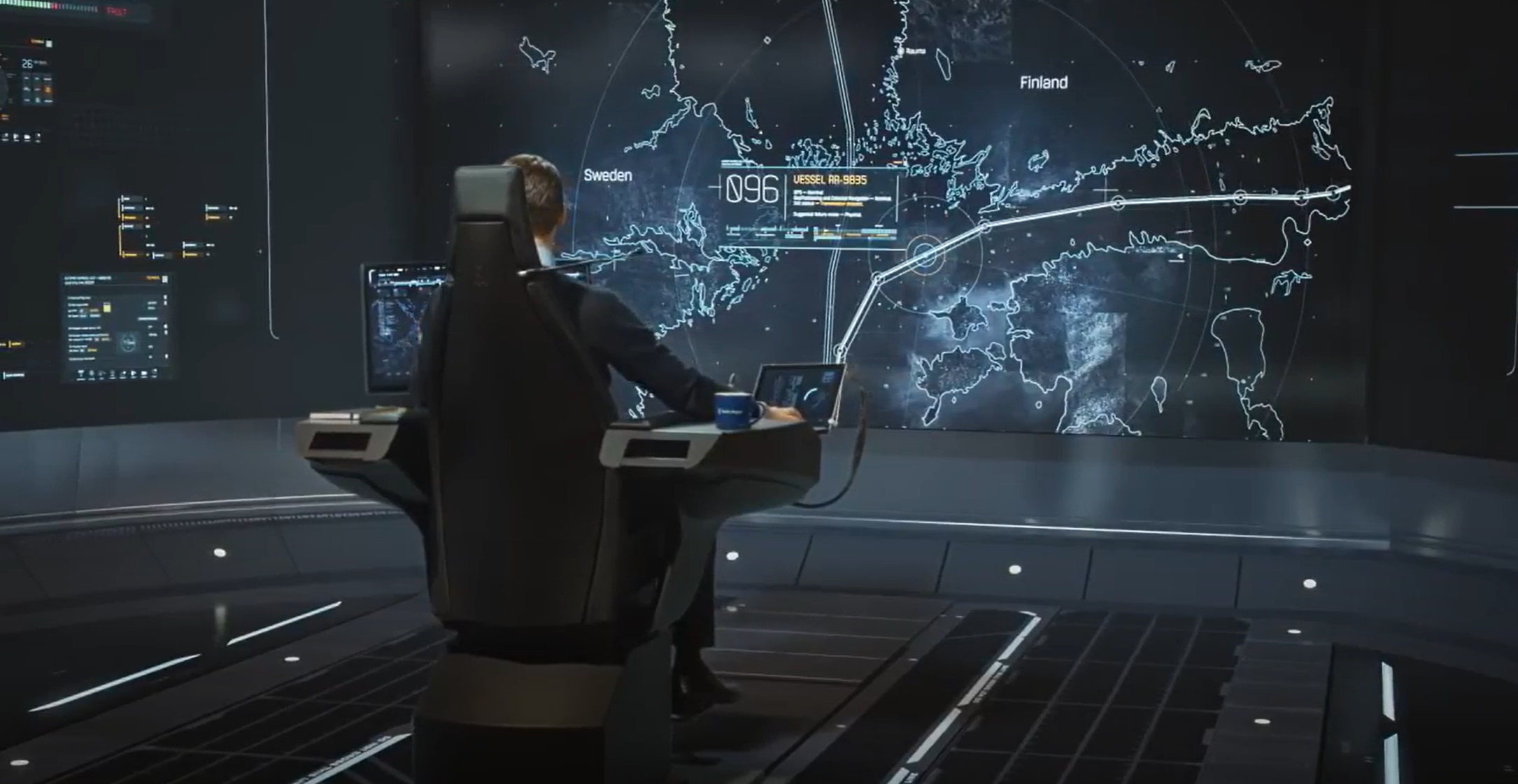The Saga of the CIOs
Chapter 1: An Introduction to Integrated Operations Centers
Date: 08/23/2023
Authors: Ariana Carrazana Di Lucia, Herman Aguirre-Jofré
Opening Words
Welcome to the world of technology and automation!
Just as the Force in Star Wars empowers extraordinary skills and decisions, Integrated Operations Centers provide companies with the ability to coordinate and make more efficient and effective decisions, allowing for a holistic approach and a competitive advantage in a challenging business environment.
Just as the Jedi and Sith strive to maintain a balance between the Light and Dark Sides of the Force, companies must also seek balance when implementing CIOs. Careful and ethical implementation ensures that this technological tool is used for the benefit of the company and its stakeholders.
In this blog, we present the benefits of Integrated Operations Centers in developed countries and how they have improved productivity in various industrial sectors.

Can you imagine being able to control and monitor all stages of your company's value chain from a single location?
Integrated Operations Centers make this possible, allowing for the remote and automated visualization, control, and monitoring of industrial activities. In Europe and the UK, these centers have been implemented in various sectors, from manufacturing to space exploration. Some cities have implemented these centers to improve the quality of life for their residents. The digitization and automation of industrial activities have led to greater efficiency in the value chain, resulting in reduced lead times and increased production capacity.
In the mining industry, Integrated Operations Centers have enabled the implementation of more efficient and productive operational models, leading to increased safety and cost reduction. Additionally, CIOs enable decision-making based on globally integrated information systems, enhancing responsiveness to critical situations. Overall, CIOs are becoming the new norm for mining operations, facilitating the implementation of a collaborative model of remote work and the capture of value from high-performance multifunctional teams under a single workspace.
Want to learn more about the benefits of Integrated Operations Centers? Keep reading our blog!
We will share with you, in a trilogy, some of the most relevant aspects of our research on these work environments that seem to come straight from a Science Fiction movie.
CIOs can be considered as neural points where strategic and tactical decisions are made, operations are coordinated, and resources are managed to achieve specific objectives. These work environments are essential for maintaining control and efficiency in complex and dynamic situations.
In the journey towards Sustainable Industries and high standards of Operational Excellence, we must unlearn what we have learned. This implies being willing to abandon preconceived ideas or limiting knowledge that may interfere with growth and understanding of the world, societal dynamics, and consequently, markets. Continuous learning and openness to new perspectives in the era of technological revolution are essential for evolving and overcoming many obstacles in mining. Yoda encourages us to free ourselves from mental limitations and be willing to reassess and adapt beliefs to achieve greater understanding and wisdom. These should also be the goals of implementing a CIO for any company heading in this direction.
Let's go for the first chapter!
Development
MiningiDEAS has been working for some time on conceptual ideas, operational model design, and the implementation of the necessary tools to make Integrated Operations Centers successful. We have materialized this experience in various consultancies for the main Copper producers in LATAM.
Throughout the blog, we will mention Integrated Operations Centers (referred to as CIOs in Spanish) installed in developed countries, listing the industrial sectors that have enjoyed the benefits of 4.0 technology and automation. The technological landscape in Europe is radically different from commodity-exporting countries because any company that controls geographically distant facilities or production chains requires operations centers that ensure the achievement of their commercial and operational objectives.

For at least the last two decades, the digitization, remote operation, and automation of industrial activities have been physically consolidated in centers that allow the visualization, control, and monitoring of value chain stages. These centers have proven to enhance productivity and require fewer workers per shift. A case worth highlighting is the UK Rail Operating Centre, which in 2014 brought together independently operating teams in different geographical locations. The result was an increase in passenger capacity and a reduction in delay times [1].
Large-scale enterprises and corporations have transitioned from on-site work to remote work systems, saving on transportation time and the use of physical office spaces. The Coronavirus accelerated the adoption of technologies, and many tasks that previously required in-person meetings were replaced by virtual encounters [2]. Due to this situation, Integrated Operations Centers gained even more strength.
Remote operation centers (also known as ROCs) have become common practice in the industries of oil, defense, and aerospace, primarily to keep people out of harm's way but also to optimize operations. A common theme in these industries is that for ROCs to be successful, it is necessary to incorporate and integrate a range of emerging technologies. However, most of them claim that the biggest challenges are the commitment of stakeholders to the necessary process and behavior changes for successful operation [3].
"Do or do not, there is no try." - Yoda
In Europe and the UK, Integrated Operations Centers have been implemented in sectors including manufacturing, ports, aviation, energy, communications, transportation, healthcare, military, defense, and space exploration [4] (references to each industrial sector are provided throughout this document).
In the UK, in particular, there are cases of Integrated Operations Centers implemented by Municipalities (Councils) to unify information regarding transportation, health, and safety. This information is blended and analyzed to generate citizen proposals that improve the quality of life for residents. The Bristol Operations Center [5] is an example that illustrates this type of application. The development of smart cities is the ultimate goal of these centers, which clearly have a strategic vision over an operational one due to their medium and long-term social impact objectives. Similar examples have been replicated in numerous Spanish cities, with one of the most notable being the adoption and scalable implementation of technology transferred to society in the city of Gijón, Asturias [6] [7]. In this case, the deployment of screens has been extended to public and private spaces that are part of people's daily lives.
The dreams of creating centralized spaces where humans and machines interact are not confined to science fiction books. In 2016, Rolls-Royce produced a provocative video showcasing what an operations center capable of controlling a fleet of autonomous ships destined for any location on the globe would look like. Some of the technologies illustrated in that video are now a reality, enabling companies to control and manage a large number of assets simultaneously over thousands of kilometers [8] [9]. The long-desired wish to be assisted by an artificial intelligence voice when making decisions is gradually becoming a reality in operational centers for manufacturing in developed countries.

It is important to note that, in the research conducted on Operations Centers worldwide, many of them have an implicit strategic variable. Most of these centers have specific physical spaces where the long-term vision and mission of the company are discussed as a mandatory part of the decision-making model. Generally, when speaking of strategy, the concept is accompanied by topics such as research, development of initiatives, and benchmarking.
"Master, moving rocks is one thing, this is completely different." - Luke.
"You must unlearn what you have learned." - Yoda
Now that you know a bit more about CIOs, we will summarize three items in terms of functions and technologies that characterize the driving force behind these new work environments:
- Advanced Technology: Current CIOs use advanced technologies such as interactive displays, high-speed communication systems, real-time data visualization, and information analysis to make informed decisions.
- Control and Monitoring: Leaders and operators monitor and control a variety of systems, including navigation, communication, sensors, and operations, to ensure smooth operation.
- Decision-Making: Leaders in these centers must make crucial decisions based on available information and evolving situations. Coordination and collaboration are essential to achieve established objectives.
We look forward to seeing you in the next chapter to tell you how CIOs are being implemented in different industrial sectors.
Want to learn more about the benefits of Integrated Operations Centers? Contact us at contact@miningideas.com, and we will be delighted to assist you. If you want to read about our services related to CIOs, click here.
Bibliographic References:
- Rail operating centre officially opened in Manchester. Published by Network Rail
- Remote operating centers in mining: Unlocking their full potential. Published by McKinsey & Company
- Remote Operations Centres — Lessons from Other Industries. Authors: Colin FarrellyL R Records.
- Network Operations Centre. Published by European Space Agency ESA
- Bristol Operations Centre
- Gijón, la ciudad donde los vecinos casi pueden tocar los beneficios del ‘open data’.
- Gijón video on Youtube
- Rolls-Royce reveals future shore control centre
- Rolls Royce Youtube video
Continue reading The Saga of CIOs Chapter 2: Implementation of CIOs in Various Industrial Sectors.
You can also visit: